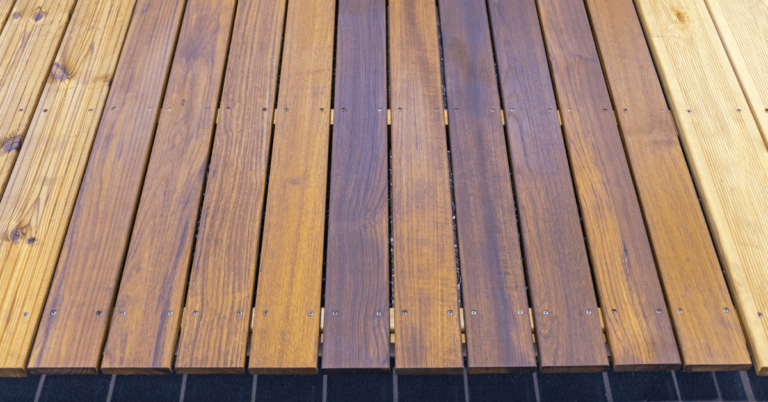Sealing your deck is crucial for maintaining its longevity, beauty, and safety. Neglecting this important task can lead to significant wear and tear, diminishing your home’s curb appeal and resulting in costly repairs. In this comprehensive guide, we’ll explore everything you need to know about deck sealing, from the difference between staining and sealing to expert tips for achieving the best results.
What Is Deck Sealing?
Deck sealing refers to the process of applying a protective layer to your wooden deck, primarily made from softwoods like pine. This sealant serves as a barrier against moisture, UV rays, and other environmental factors that can lead to rot and deterioration over time. Although sealants require periodic reapplication, they play a vital role in extending the lifespan of your deck, ensuring that it remains both functional and visually appealing.
Why Is Sealing Important?
Sealing your deck protects it from the following:
- Moisture Damage: Prevents water penetration that can cause wood rot and mold growth.
- UV Ray Protection: Shields the wood from sun damage that can lead to fading and cracking.
- Aesthetic Appeal: Maintains the beauty of the wood and enhances the overall look of your outdoor space.
Staining vs. Sealing: Understanding the Difference
While staining and sealing are often used interchangeably, they serve different purposes:
- Staining: Adds color to the wood and provides some UV protection but offers limited moisture defense.
- Sealing: Primarily focuses on moisture protection. Many modern sealants combine both features, providing color and moisture defense in a single application.
For optimal protection, consider applying both a stain and a sealant. Products that combine these two functionalities are available for easy application.
Cost of Deck Sealing: What to Expect
The average cost of professional deck sealing hovers around $900. However, costs can vary based on location, deck size, and condition. Opting for a DIY approach can reduce your expenses by up to 75%. While higher-quality sealants might require a larger initial investment, they offer superior and longer-lasting protection.
How Long Does Deck Sealing Take?
The time required for sealing a deck depends on several factors, including:
- Sealant Type: Some sealants require a drying time of 48 hours before application, while others can be applied to damp surfaces.
- Weather Conditions: Always check the weather forecast and follow the manufacturer’s guidelines for drying times to avoid compromising the integrity of your seal.
Step-by-Step Guide to Sealing Your Deck
1. Clean the Deck
Start by pressure washing the deck to remove dirt, grime, and the weathered layer of wood. This step is essential to prepare the surface for the sealant to adhere properly.
2. Inspect and Repair
Examine your deck for any loose, broken, or squeaky boards. Addressing these issues before sealing ensures a smooth application and helps avoid future problems.
3. Apply Sealant
Choose a staining sealant that provides both moisture and UV protection. Make sure to cover all edges and joints to ensure comprehensive coverage.
4. Allow for Drying Time
After applying the sealant, let the deck dry for at least 48 hours before walking on it or placing furniture back on it.
Related article –
Decking & Patios
- 7 Things You Should Never Store on Your Deck: Expert Advice
- How to Clean a Deck for the Season: A Comprehensive Guide
Deck Sealing Tips and Tricks
- Sanding: Lightly sand the surface with 120-grit sandpaper to smooth it and promote deeper sealant penetration.
- Deep Cleaning: After pressure washing, use a deck cleaner to brighten the wood. Follow the instructions on the cleaner for optimal results.
- Stain Removal: For stubborn stains, utilize non-chlorine bleach and a stiff brush to scrub them away prior to sealing.
- Regular Resealing: Keep a calendar reminder for when your deck should be resealed to ensure ongoing protection.
Conclusion
By following these home improvement guidelines and keeping up with regular maintenance, your deck will remain a beautiful and safe outdoor space for years to come. Sealing your deck not only enhances its appearance but also protects your investment, ensuring a stunning and functional area for relaxation and entertainment.

